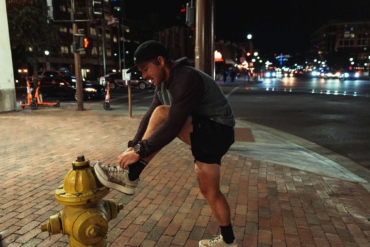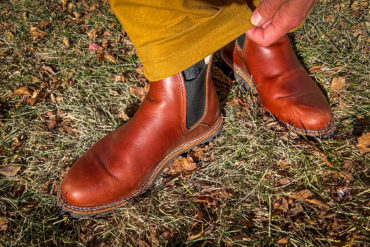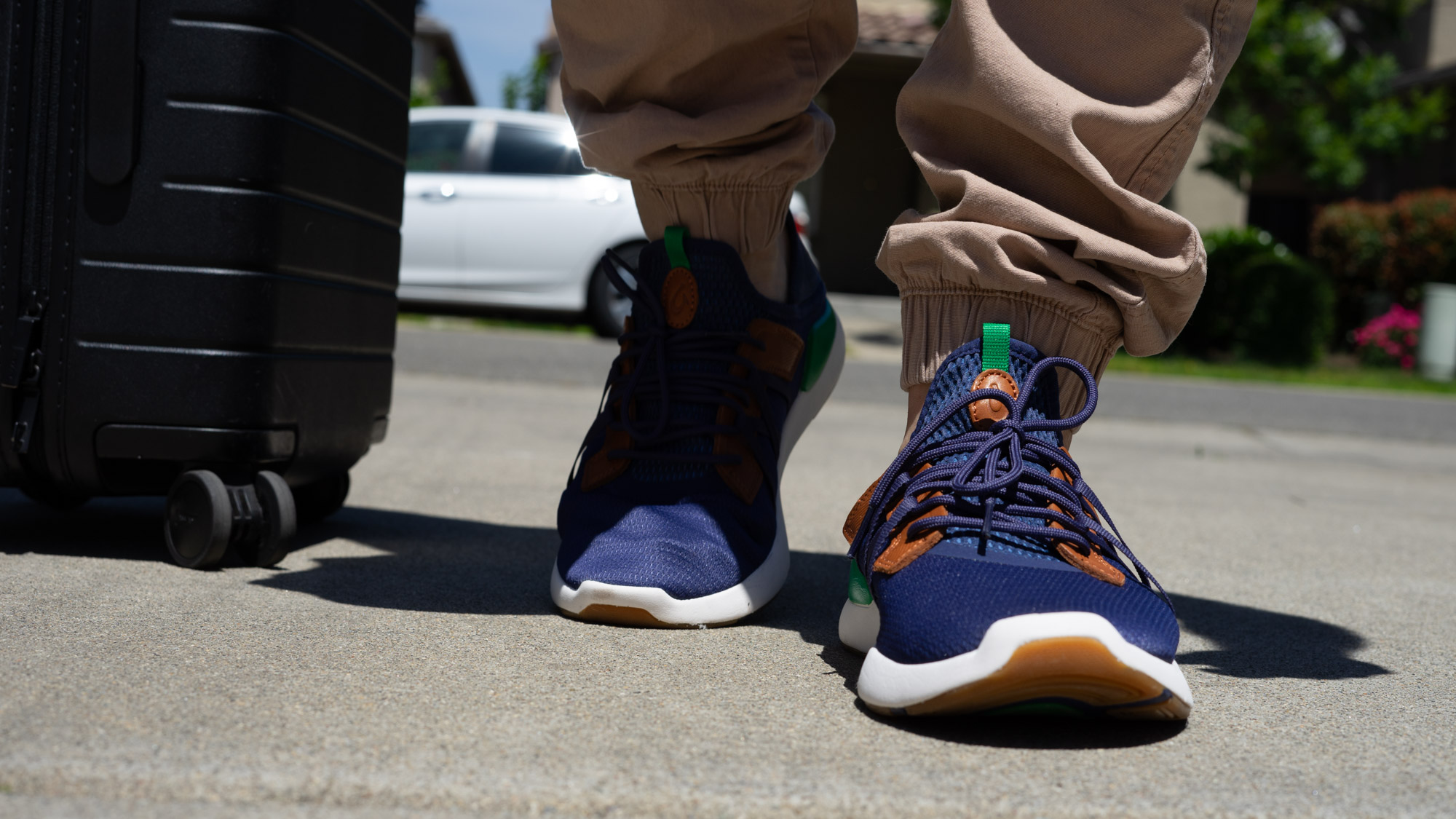If you’re planning to run a half-marathon or marathon in 2020 — or any road-running race, for that matter — you’d be wise to invest in some new shoes.
While that’s always been good advice, we’re specifically talking about the white-hot category of long-distance racing flats dropping in late winter and early spring.
This new class of “super shoes” — based on a new paradigm in shoe design that includes curved, rigid plates embedded in soft, thickly cushioned midsoles that maximize a runner’s energy return — are almost guaranteed to put you on a path to new personal best times. They’re undoubtedly some of the best marathon running shoes around.
Nike was the first brand to unveil its propulsive, next-generation shoes in 2017, followed by HOKA ONE ONE last year. Now, Brooks, adidas, Saucony, ASICS, 361 Degrees, and Skechers all have super shoes with carbon-fiber plates launching in 2020.
Note: All weights listed below are for a U.S. men’s size 9.
Super Shoes: The Best Marathon Running Shoes
adidas adizero Pro — Men’s & Women’s: $200
Adidas announced the first of its new super shoes in mid-February, a month after Kenyan Rhonex Kipruto set a new 10K world record (26:24!) on the roads wearing a pair of adizero Pros. (In theory, adidas launched the super shoe revolution when it unveiled its extremely resilient Boost foam in 2013.)
The new adizero Pro is a featherweight racing flat made from advanced foams, a carbon-fiber plate, and a thin, airy (but very supportive) mesh upper.
This shoe will be available in select markets on April 1 and worldwide on May 15.
Pro: The innovative, dual-density midsole features resilient Boost foam in the heel for maximum energy return and featherweight Lightstrike foam for explosive toe-offs.
Con: The adizero Pro doesn’t launch until April 1 and will be very hard to find until May 15.
Specs: 8.1 oz., 10mm heel-toe offset
Learn More About the adidas adizero ProBrooks Hyperion Elite — Men’s & Women’s: $250
Brooks has been working on this shoe for more than 3 years. But we already know it works because Desi Linden has been wearing prototype versions for years — including while winning the 2018 Boston Marathon.
In contrast to the softly cushioned feel of its contemporaries in this category, the DNA Zero midsole foam of the Hyperion Elite feels relatively firm and only moderately soft upon impact with the ground. There isn’t a noticeable “pop” of energy or rolling sensation like most of the other shoes in this review, but it does feeling more lively at faster paces.
The Hyperion Elite will be available on February 29.
Pro: The Hyperion Elite serves up a much more stable ride from heel to toe than most of the new super shoe models in this review.
Con: One of the only drawbacks is the less-secure feeling around the minimal heel collar.
Specs: 7.0 oz., 8mm heel-toe offset
See the Brooks Hyperion EliteHOKA EVO Carbon Rocket — Unisex: $160
This lightweight, low-to-the-ground model hasn’t gained the fanfare of many other models. But runners have proven it’s a very fast and energetic model for races from 5K to half-marathon. It’s also a great shoe for fast workouts like intervals and tempo runs.
Cam Levins even set a new Canadian marathon record of 2:09:25 in his debut at the distance when HOKA debuted this shoe in October 2018.
Pro: With a snug, athletic fit from its two-layer mesh upper and a proprioceptive feel for the ground, the Carbon Rocket inspires fast running and will make you feel footloose and fancy-free the moment you slip it on.
Con: The EVO Carbon Rocket has a bit of a minimalistic, “barely there” feel to it. The 1mm heel-toe offset might be a bit low for athletes who typically train in shoes in the 4-10mm range.
Specs: 7.6 oz., 1mm heel-toe offset
See the HOKA Carbon RocketHOKA Carbon X — Men’s & Women’s: $180
HOKA was hot on the heels of Nike when it began developing this shoe in 2015. Although it didn’t release it until 2019, American Jim Walmsley made the debut a huge success by setting a new world best for 50 miles of 4:50:08.
Some have called it “more democratic” than some of the high-end elite racing shoes because its rockered outsole design can accommodate a wider range of gait styles, including heavy heel-striking strides.
Pro: Like many shoes in this category, the Carbon X is softly cushioned with a firm demeanor. But the design of the shoe allows it to feel firmer and more consistent upon impact with the ground.
Con: Because of the stiff demeanor and significant curvature of the outsole, it takes time to get used to the distinct rolling rhythm of these shoes.
Specs: 8.8 oz., 5mm heel-toe offset
New Balance Fuel Cell TC — Men’s & Women’s: $200
New Balance launched its first carbon-plated racing flat, the Fuel Cell 5280, as a niche specialist for mile races on the roads. It morphed that technology to create the Fuel Cell TC, a shoe geared for running races from 10K to the marathon.
Although a tad heavier than the other models in this review, it has a plush, softly lined interior and offers better traction on wet surfaces.
Note: These shoes are currently sold out.
Pro: This is a race-day shoe. But it’s also supremely comfortable for those long, sometimes grueling weekend training runs while you’re preparing for your marathon.
Con: The heel of this shoe is extremely soft, which is best for forefoot or midfoot strikes and definitely not for runners who overpronate.
Specs: 9.3 oz., 10mm heel-toe offset
Nike Vaporfly 4% — Unisex: $250
The original super shoe that started the revolution in 2017, the Vaporfly 4% earned its name after elaborate laboratory testing at the University of Colorado showed that runners gained a 4.2% edge in efficiency compared to the fastest shoes on the market at the time.
It’s a softly-cushioned, featherweight shoe with a pronounced, springy feel in every stride.
Pro: With more hype and focus on the Vaporfly NEXT% and the forthcoming Alphafly, you might be able to find a pair of these for less than MSRP.
Con: The 4% model favors efficient runners who are not heavy heel-strikers. Because of the soft foam, narrow rear-foot profile, and high heel-toe offset, heavy heel-strikers might find this shoe a bit unstable.
Specs: 7.0 oz., 11mm heel-toe offset
See the Nike Vaporfly 4%Nike ZoomX Vaporfly NEXT% — Unisex: $250
The second edition of the Vaporfly has proven even better — and bigger — than the first. It has 15% more ultralight ZoomX midsole foam, a lower heel-toe offset, a lighter VaporWeave woven mesh upper, and better traction to the outsole rubber.
Note: These shoes are currently sold out.
Pro: In the past year, this shoe has dominated marathons and half-marathons around the world, accounting for several world records, major marathon victories, and thousands of recreational runner PRs.
Con: Although fast and efficient, the NEXT% produces a somewhat awkwardly bouncy ride (and a unique sound). It takes some getting used to.
Specs: 6.6 oz., 8mm heel-toe offset
See the Nike ZoomX Vaporfly NEXT%Skechers GOrun Speed Elite Hyper — Men’s: $190
After making racing flats for legendary runner Meb Keflezighi for several years, Skechers has continued to make huge strides with its race-day shoes. The Speed Elite Hyper is a featherweight speed burner that Skechers built on its innovative Hyper Burst foam. It is one of the lightest and most resilient midsole compounds on the market.
Pro: The lightweight, breathable mono-mesh upper is very durable and supportive. It allows runners to cinch their feet reliably into the chassis of the shoe
Con: The toebox feels a bit cramped, partially because of the upper’s rigidity and also because of the forefoot’s narrow shape.
Specs: 5.7 oz., 4mm heel-toe offset
See the Skechers GOrun Speed EliteHOKA Rocket X — Unisex: $200
Referring to it only as the “Trials Dagger,” HOKA had been a bit secretive about this new, elite-level marathon shoe before its launch on February 29 at the U.S. Olympic Trials Marathon in Atlanta.
And then Aliphine Tuliamuk wore it en route to winning the women’s race in 2:27:23. While it’s similar in shape to HOKA’s Mach 3 performance trainer, the Rocket X is lighter, more energetic, and more breathable.
Pro: It’s smoother, more agile, and almost 1.5 ounces lighter than the Carbon X shoe.
Con: The outsole has very little durable rubber patches and mostly exposed midsole foam.
Specs: 7.4 oz. 5mm heel-toe offset
See the HOKA Rocket XNike Alphafly NEXT% — Unisex: $275
The worst-kept secret in the running shoe industry finally became available on February 29 at Nike.com. But Nike quickly sold out of the limited quantity of this amped-up super shoe that hundreds of runners wore in the U.S. Olympic Trials Marathon — including Galen Rupp (2:09:20) and Jake Riley (2:10:02), the top two finishers in the men’s race. (Every qualified runner was offered a free pair before the race.)
In addition to a stiff carbon-fiber propulsion plate, it has the highest and most maximal foam midsole possible and a propulsion-enhancing Air Zoom pod under the forefoot for more giddy-up.
Pro: This Alphafly was built to be more durable than the original Vaporfly 4% and NEXT% shoes. And after our initial wear tests and examination of this shoe’s construction, we concur that it should last longer than the 50-mile expectations of its predecessors.
Con: It has a distinctly bouncy ride and feels much higher off the ground compared even to its Vaporfly ZoomX NEXT% cousin.
Specs: 7.4 oz. 8mm heel-toe offset
See the Nike Alphafly NEXT%Saucony Endorphin Pro — Unisex: $200
Saucony moved up the launch date for this shoe from June to mid-April, and then Molly Seidel gave it instant street cred by running 2:27:31 and placing second in the women’s U.S. Olympic Trials Marathon race in her marathon debut!
We found it to be light, lively, and stable during our initial training runs. (It didn’t feel as high off the ground or as egregiously bouncy as some of the other shoes in this overview.)
Pro: The steeply inclined carbon-fiber plate embedded in the resilient foam midsole acts as a lever that propels the foot forward after impact, but it also reduces energy exerted from the muscles of the forefoot as it lifts off into a new stride and decreases fatigue in the lower calf muscle and Achilles tendon.
Con: To keep the shoe light, Saucony used only small sections of durable rubber on the outsole, so there is a lot of exposed foam that is susceptible to wear and tear.
Specs: 7.5 oz. 8mm heel-toe offset
See the Saucony Endorphin ProShoes for Faster Marathons
The dominance of the Nike Vaporfly models in recent years from athletes wearing them is undeniable.
Eliud Kipchoge set the current men’s marathon world record of 2:01:37 wearing a pair of the bright-red Vaporfly 4% model in Berlin in 2018. And Brigid Kosgei famously wore a pair of hot-pink NEXT% shoes last October in Chicago when she shattered Paula Radcliffe’s 16-year-old women’s world record with an eye-popping 2:14:04.
In all, Vaporfly-shod runners claimed 31 of the 36 podium positions in the six world marathon majors in 2019. Among recreational runners, about 41% of marathons under 3 hours in the second half of 2019 were run in Nike Vaporfly models, according to the New York Times.
And then, of course, there was Kipchoge’s still-unfathomable 1:59:40 effort last October at the INEOS 159 Challenge. It was an unofficial marathon time, but it still opened people’s eyes to the incredible potential of an elite athlete in the pink-and-white Nike Alphafly shoes.
Many runners called this new class of shoes unfairly advantageous, outrageously expensive, and even unethical until World Athletics announced new shoe guidelines on January 31. It more or less declared all but one prototype shoe to be legal and conforming.
Now, you can expect the rise of this new crop of super marathon running shoes — which will include new models from ASICS, Nike, Saucony, and 361 Degrees coming soon — to have a huge impact in 2020, both for Olympic-level athletes bound for the Tokyo Summer Games and recreational runners aiming for new PRs.
There will be several additional super shoes coming to market version soon, including the Nike Alphafly (February 29), ASICS MetaRacer (March 24), and Saucony Endorphin Pro (June 1).
Each has a similar but unique take on the newfangled shoe design methods that include carbon-fiber plates and multifaceted midsole foams. We will continue to add new shoes to this story as wear-test models become available.
Brian Metzler is the author of “Kicksology: The Hype, Science, Culture and Cool of Running Shoes” (2019, VeloPress).




















